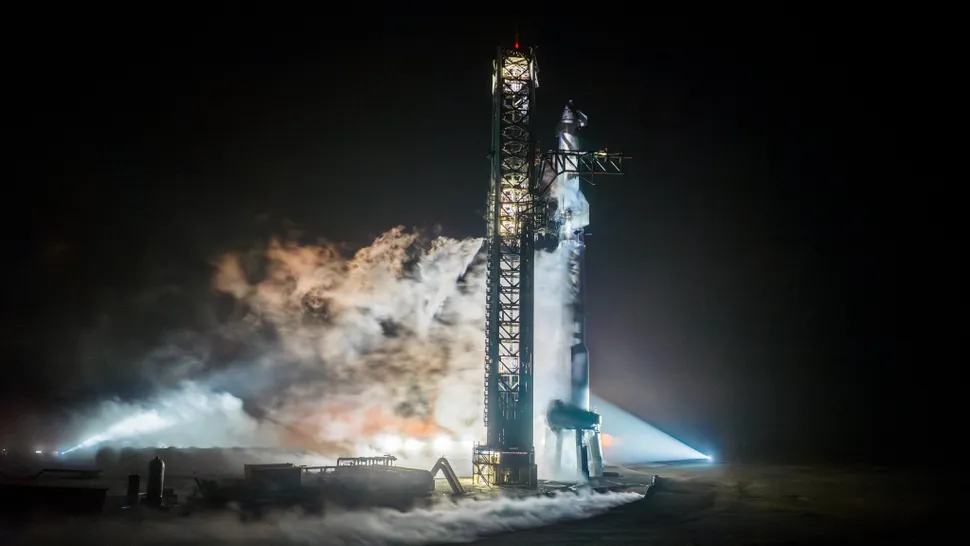SpaceX’s next Starship to fly has passed a critical fueling test, setting the stage for a highly anticipated third launch attempt of the world’s biggest rocket.
The gleaming, stainless-steel Starship rocket and its Super Heavy booster, which together stand 400 feet tall (122 meters), were filled with more than 10 million pounds of liquid methane and liquid oxygen propellant during the recent launch dress rehearsal, which was performed at SpaceX’s Starbase facility near Boca Chica Beach in southern Texas.
“Starship Flight 3 preparing for launch,” SpaceX CEO Elon Musk wrote in a post on X (formerly Twitter), sharing SpaceX’s photos of the fueling test on March 4. SpaceX shared the series of stunning photos of the fueling test in a separate X post.
SpaceX’s Starship and Super Heavy booster are designed to be the world’s most powerful rocket and fully reusable, capable of hauling up to 165 tons (150 metric tons) into orbit. NASA has picked Starship to eventually land its next astronauts on the moon as the Artemis 3 lunar lander in 2026. But first, SpaceX has to successfully launch a Starship on at least a near-orbital flight, something its first two test flights, in April and November of 2023, failed to do.
In a recent interview, Elon Musk said SpaceX’s third Starship test flight could launch in early March, but the company is still awaiting a license from the Federal Aviation Administration (FAA) for the upcoming flight.
Last week, FAA officials closed a mishap investigation into SpaceX’s Starship Flight 2 test, which launched a Starship and Super Heavy booster on Nov. 18. That mission ended in two explosions, first of the Super Heavy booster 3.5 minutes after liftoff and then of the Starship vehicle itself eight minutes into the flight, at a maximum altitude of 91 miles (148 kilometers).
The FAA investigation identified 17 corrective actions for SpaceX to tackle before its next Starship launch. Those actions include 10 fixes on the 165-foot-tall (50 m) Starship vehicle and seven on the Super Heavy booster.
In a statement released on Feb. 26, SpaceX wrote that the Flight 2 Super Heavy booster exploded over the Gulf of Mexico after one of its 33 Raptor engines “failed energetically” after stage separation, likely due to a blocked filter in an liquid oxygen line, leading to a cascade failure.
“SpaceX has since implemented hardware changes inside future booster oxidizer tanks to improve propellant filtration capabilities and refined operations to increase reliability,” SpaceX wrote in the statement.
The Flight 2 Starship vehicle, meanwhile, likely failed after a leak in its aft section occurred during a planned venting of liquid oxygen, which led to a “combustion event and subsequent fires that led to a loss of communication between the spacecraft’s flight computers.”
“SpaceX has implemented hardware changes on upcoming Starship vehicles to improve leak reduction, fire protection, and refined operations associated with the propellant vent to increase reliability,” SpaceX wrote in its statement. “The previously planned move from a hydraulic steering system for the vehicle’s Raptor engines to an entirely electric system also removes potential sources of flammability.”
SpaceX rolled its Flight 3 Starship and Super Heavy booster vehicles out to its Starbase launch pad separately in early February. The company attached Starship atop the Super Heavy booster in a stacked configuration for flight on Feb. 13.
Source: https://www.space.com/spacex-fuels-starship-megarocket-ahead–of-3rd-test-launch



